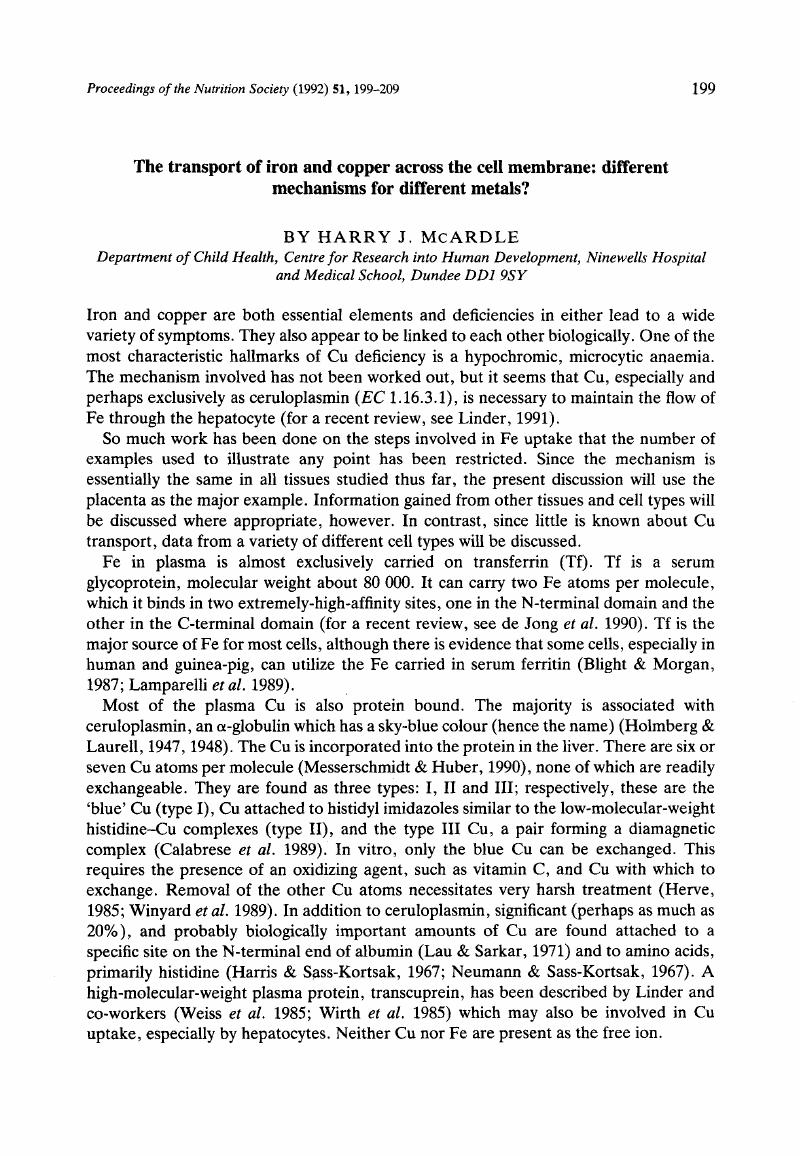Crossref Citations
This article has been cited by the following publications. This list is generated based on data provided by Crossref.
Van Den Berg, G. J.
YU, S.
Lemmens, A. G.
and
Beynen, A. C.
1994.
Dietary ascorbic acid lowers the concentration of soluble copper in the small intestinal lumen of rats.
British Journal of Nutrition,
Vol. 71,
Issue. 5,
p.
701.
Hamada, T.
1995.
Antioxidant and prooxidant roles of copper in Tween 20-induced hemolysis of hamster and pig erythrocytes containing marginal vitamin E.
Experientia,
Vol. 51,
Issue. 6,
p.
572.
Schonewille, J.Th.
Yu, S.
and
Beynen, A.C.
1995.
High iron intake depresses hepatic copper content in goats.
Veterinary Quarterly,
Vol. 17,
Issue. 1,
p.
14.
Dawson, D. C.
and
Ballatori, N.
1995.
Toxicology of Metals.
Vol. 115,
Issue. ,
p.
53.
Götz, Mario E.
Künig, Gabriella
Riederer, Peter
and
Youdim, Moussa B.H.
1996.
Chemical Factors in Neural Growth, Degeneration and Repair.
p.
425.
Mercer, Julian F. B.
and
Camakaris, James
1998.
Metal Ions in Gene Regulation.
p.
250.
Pedrosa, Lucia de Fátima Campos
and
Cozzolino, Sílvia Maria Franciscato
1999.
Alterações metabólicas e funcionais do cobre em diabetes mellitus.
Revista de Nutrição,
Vol. 12,
Issue. 3,
p.
213.
Mercer, Julian F. B.
Kramer, David
and
Camakaris, James
2002.
Handbook of Copper Pharmacology and Toxicology.
p.
249.
Hostetler, Chris E.
Kincaid, Ron L.
and
Mirando, Mark A.
2003.
The role of essential trace elements in embryonic and fetal development in livestock.
The Veterinary Journal,
Vol. 166,
Issue. 2,
p.
125.
Lenartowicz, Malgorzata
Kennedy, Christine
Hayes, Helen
and
McArdle, Harry J.
2015.
Transcriptional regulation of copper metabolism genes in the liver of fetal and neonatal control and iron-deficient rats.
BioMetals,
Vol. 28,
Issue. 1,
p.
51.
Baker, Lindsay B.
and
Wolfe, Anthony S.
2020.
Physiological mechanisms determining eccrine sweat composition.
European Journal of Applied Physiology,
Vol. 120,
Issue. 4,
p.
719.



